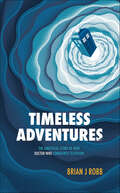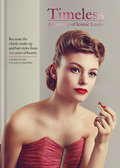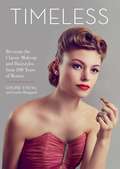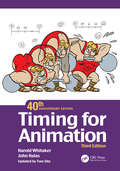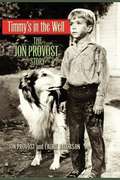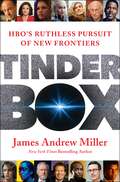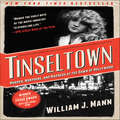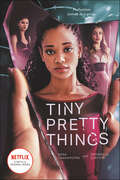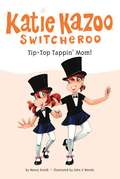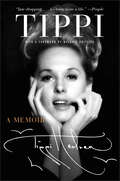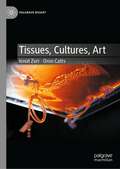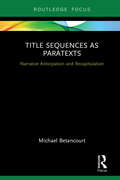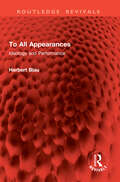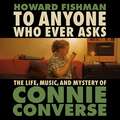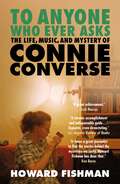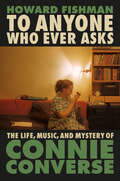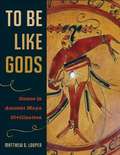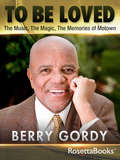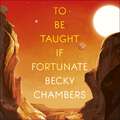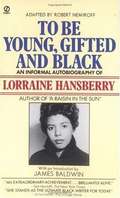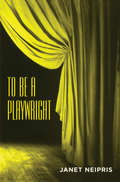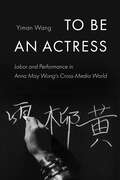- Table View
- List View
Timeless Adventures: The Unofficial Story of How Doctor Who Conquered Television
by Brian J. RobbThis critical history of Doctor Who covers the series 60 years, from the creation of the show to its triumph as Britain's number one TV drama. Opening with an in-depth account of the creation of the series within the BBC of the early 1960s, each decade of the show is tackled through a unique political and pop cultural historical viewpoint, exploring the links between contemporary Britain and the stories Doctor Who told, and how such links kept the show popular with a mass television audience. Timeless Adventures reveals how Doctor Who is at its strongest when it reflects the political and cultural concerns of a mass British audience (the 1960s, 1970s and 21st Century), and at its weakest when catering to a narrow fan-based audience (as in the 1980s). The book also addresses the cancellation of the show in the late 1980s (following the series becoming increasing self-obsessed) and the ways in which a narrowly-focused dedicated fandom contributed to the show's demise and yet was also instrumental in its regeneration for the 21st Century under Russell T. Davies, and analyses the new series to reveal what has made it so popular, reflecting real world issues like consumerism and dieting.
Timeless: A Century of Iconic Looks
by Louise Young Loulia SheppardBy Louise Young and Loulia Sheppard, 2018 Academy Award nominee for her hair and make-up design on Victoria and Abdul.'If you haven't heard of Louise Young and are interested in period makeup, or any makeup in fact, then we highly recommend you check out her latest book.' - PIXIWOOThe definitive step-by-step guide to recreating the most striking make-up and hair styles of the 20th century.Timeless is a beauty bible for the golden ages of style from renowned film, television and make-up artist Louise Young, along with Academy Award-nominated film industry hairstylist Loulia Sheppard.Step-by-step photography and clear, concise instructions help you to recreate make-up and hair looks from the past 100 years of beauty, from the dark, smouldering eyes of the jazz-age flapper to the red lips and victory rolls of the 1940s, right up to the electric colours of the 1980s and beyond.Accurate, practical and beautiful, this is the ultimate guide to the most classic looks of all time.Between them, Louise and Loulia have provided make-up and hair styling for stars such as Scarlett Johansson, Keira Knightley and Selma Hayek, and on films including Victoria and Abdul, Fantastic Beasts and Where to Find Them, Pride and Prejudice, Florence Foster Jenkins, Anna Karenina and The Duchess, among many others.
Timeless: Recreate the Classic Makeup and Hairstyles from 100 Years of Beauty
by Louise Young Loulia SheppardFrom renowned film, TV, and fashion makeup artist Louise Young-along with leading film industry hairstylist Loulia Sheppard, Timeless is the definitive step-by-step guide to the most iconic looks of a century.Timeless is a beauty bible for the golden ages of style. Step-by-step photography and clear, concise instructions help you to recreate the most memorable makeup and hair looks of the past 100 years, including: The silent-screen "vamp" Jazz-Age bob and smoldering eyes 1930s Hollywood glamour World War II-era red lips and victory rolls The 1950s bombshell Swinging '60s London Look Disco-fever beauty The colorful, eclectic '80s Grunge-era chicThroughout, Timeless provides inspiration and instruction on how to recreate the looks of beauty icons like Louise Brooks, Clara Bow, Ginger Rogers, Myrna Loy, Betty Grable, Rita Hayworth, Ava Gardner, Lauren Bacall, Gene Tierney, Grace Kelly, Lucille Ball, Elizabeth Taylor, Marilyn Monroe, Audrey Hepburn, Jean Shrimpton, Sophia Loren, Farrah Fawcett, Julia Roberts, Brooke Shields, Kate Moss, Drew Barrymore, and many more.Accurate, practical, and beautiful, this is the ultimate guide to the most classic looks of all time-a must-have for makeup artists, hairstylists, classic film fans, and anyone interested in incorporating vintage style into the modern day.
Timing for Animation, 40th Anniversary Edition
by Harold Whitaker John HalasTiming for Animation has been one of the pillars of animation since it was first published in 1981. Now this 40th anniversary edition captures the focus of the original and enhances this new edition with fresh images, techniques, and advice from world-renowned animators. Not only does the text explore timing in traditional animation, but also timing in digital works. Vibrant illustrations and clear directions line the pages to help depict the various methods and procedures to bring your animation to life. Examples include timing for digital production, digital storyboarding in 2D, digital storyboarding in 3D, and the use of After Effects, as well as interactive games, television, animals, and more. Learn how animated scenes should be arranged in relation to each other, how much space should be used, and how long each drawing should be shown for maximum dramatic effect. All you need to breathe life into your animation is at your fingertips with Timing for Animation. Key Features: Fully revised and updated with modern examples and techniques Explores the fundamentals of timing, physics, and animation Perfect for the animation novice and the expert Get straight to the good stuff with simple, no-nonsense instruction on the key techniques like stretch and squash, animated cycles, overlapping, and anticipation. Trying to time weight, mood, and power can make or break an animation—get it right the first time with these tried and tested techniques. Authors Harold Whitaker was a BAFTA-nominated professional animator and educator for 40 years; many of his students number among today’s most outstanding animation artists. John Halas, known as "The father of British animation" and formerly of Halas & Batchelor Animation Studio, produced more than 2,000 animation films, including the legendary Animal Farm (1954) and the award-winning Dilemma (1981). He was also the founder and president of the International Animated Film Association (ASIFA) and former Chairman of the British Federation of Film Societies. Tom Sito is Professor of Animation at the University of Southern California and has written numerous books and articles on animation. Tom’s screen credits include Shrek (2001) and the Disney classics Who Framed Roger Rabbit (1988), The Little Mermaid (1989), Beauty and the Beast (1991), Aladdin (1992), and The Lion King (1994). In 1998, Tom was named by Animation Magazine as one of the 100 Most Important People in Animation.
Timmy's in the Well: The Jon Provost Story
by Jon Provost Laurie JacobsonIn this memoir Jon Provost describes his experiences as a child superstar and shares celebrity anecdotes. Timmy's in the Well illustrates what happens to a middle-class American family touched by fame. Jon's first job came at age three, forever altering the course of his life and the lives of his family. With nearly a dozen film appearances in a mere five years, Provost was named the top child movie actor of 1958 by the New York Film Critics. Yet he could barely read, hardly knew his siblings, and had few friends under the age of 35. More than 200 interviews add texture and humor to this thoroughly researched story, and the book includes a vivid portrait of the inner workings of Hollywood of the 1950s and 1960s, and it is populated with some of the biggest names of the day. [All spelling, grammatical and punctuation errors are errors that are in the book itself, not the scan.]
Tinderbox: HBO's Ruthless Pursuit of New Frontiers
by James Andrew MillerTinderbox tells the exclusive, explosive, uninhibited true story of HBO and how it burst onto the American scene and screen to detonate a revolution and transform our relationship with television forever. The Sopranos, Game of Thrones, Sex and the City, The Wire, Succession…HBO has long been the home of epic shows, as well as the source for brilliant new movies, news-making documentaries, and controversial sports journalism. By thinking big, trashing tired formulas, and killing off cliches long past their primes, HBO shook off the shackles of convention and led the way to a bolder world of content, opening the door to all that was new, original, and worthy of our attention. In Tinderbox, award-winning journalist James Andrew Miller uncovers a bottomless trove of secrets and surprises, revealing new conflicts, insights, and analysis. As he did to great acclaim with SNL in Live from New York; with ESPN in Those Guys Have All the Fun; and with talent agency CAA in Powerhouse, Miller continues his record of extraordinary access to the most important voices, this time speaking with talents ranging from Abrams (J. J.) to Zendaya, as well as every single living president of HBO—and hundreds of other major players.Over the course of more than 750 interviews with key sources, Miller reveals how fraught HBO’s journey has been, capturing the drama and the comedy off-camera and inside boardrooms as HBO created and mobilized a daring new content universe, and, in doing so, reshaped storytelling and upended our entertainment lives forever.
Tinseltown: Murder, Morphine, and Madness at the Dawn of Hollywood
by William J. MannNew York Times Bestseller • Edgar Award winner for Best Fact CrimeThe Day of the Locust meets The Devil in the White City and Midnight in the Garden of Good and Evil in this juicy, untold Hollywood story: an addictive true tale of ambition, scandal, intrigue, murder, and the creation of the modern film industry.By 1920, the movies had suddenly become America’s new favorite pastime, and one of the nation’s largest industries. Never before had a medium possessed such power to influence. Yet Hollywood’s glittering ascendency was threatened by a string of headline-grabbing tragedies—including the murder of William Desmond Taylor, the popular president of the Motion Picture Directors Association, a legendary crime that has remained unsolved until now.In a fiendishly involving narrative, bestselling Hollywood chronicler William J. Mann draws on a rich host of sources, including recently released FBI files, to unpack the story of the enigmatic Taylor and the diverse cast that surrounded him—including three beautiful, ambitious actresses; a grasping stage mother; a devoted valet; and a gang of two-bit thugs, any of whom might have fired the fatal bullet. And overseeing this entire landscape of intrigue was Adolph Zukor, the brilliant and ruthless founder of Paramount, locked in a struggle for control of the industry and desperate to conceal the truth about the crime. Along the way, Mann brings to life Los Angeles in the Roaring Twenties: a sparkling yet schizophrenic town filled with party girls, drug dealers, religious zealots, newly-minted legends and starlets already past their prime—a dangerous place where the powerful could still run afoul of the desperate.A true story recreated with the suspense of a novel, Tinseltown is the work of a storyteller at the peak of his powers—and the solution to a crime that has stumped detectives and historians for nearly a century.
Tiny Pretty Things (Tiny Pretty Things #1)
by Sona Charaipotra Dhonielle ClaytonNow a Netflix TV show! Black Swan meets Pretty Little Liars in this soapy, drama-packed novel featuring diverse characters who will do anything to be the prima at their elite ballet school.From the New York Times-bestselling author of The Belles, Dhonielle Clayton, and the author of the acclaimed Symptoms of a Heartbreak, Sona Charaipotra.Gigi, Bette, and June, three top students at an exclusive Manhattan ballet school, have seen their fair share of drama. Free-spirited new girl Gigi just wants to dance—but the very act might kill her. Privileged New Yorker Bette's desire to escape the shadow of her ballet-star sister brings out a dangerous edge in her. And perfectionist June needs to land a lead role this year or her controlling mother will put an end to her dancing dreams forever.When every dancer is both friend and foe, the girls will sacrifice, manipulate, and backstab to be the best of the best.Don’t miss the gossip, lies, and scandal that continues in Tiny Pretty Things’ gripping sequel, Shiny Broken Pieces!
Tip-Top Tappin' Mom! (Katie Kazoo Switcheroo #31)
by Nancy KrulikKatie is giving her mom tap dancing lessons! Mrs. Carew really loves Katie. But when the magic wind switcheroos Katie into her mom right before the audition, Katie panics and blows the audition.
Tippi: A Memoir
by Tippi HedrenIn this absorbing and surprising memoir, one of the biggest names of classic Hollywood—the star of Alfred Hitchcock’s The Birds and Marnie—tells her story, including never-before-revealed experiences on the set of some of the biggest cult films of all time . . . now with a foreword by Melanie GriffithFor decades, Tippi Hedren’s luminous beauty radiated from the silver screen, enchanting moviegoers and cementing her position among Hollywood’s elite—beauty and star power that continue to endure. For too long Hedren’s story has been told by others through whispered gossip and tabloid headlines. Now, Hedren sets the record straight, recalling how a young and virtuous Lutheran girl from small-town Minnesota became a worldwide legend—as one of the most famous Hitchcock girls, as an unwavering animal activist, and as the matriarch of a powerful Hollywood dynasty that includes her movie star daughter Melanie Griffith, and rising star Dakota Johnson, her granddaughter.For the first time, Hedren digs deep into her complicated relationship with the man who discovered her talent, director Alfred Hitchcock, the benefactor who would become a repulsive and controlling director who contractually controlled her every move. She speaks openly about the dark pain she endured working with him on their most famous collaborations, The Birds and Marnie, and finding the courage she needed to break away.Hedren’s incandescent spirit shines through as she talks about working with the great Charlie Chaplin, sharing the screen with some of the most esteemed actors in Hollywood, her experiences on some of the most intriguing and troubling film sets—including filming Roar, one of the most dangerous movies ever made—and the struggles of being a single mother—balancing her dedication to her work and her devotion to her daughter—and her commitment to helping animals. Filled with sixteen pages of beautiful photos, Tippi is a rare and fascinating look at a private woman’s remarkable life no celebrity aficionado can miss.
Tips: Ideas for Actors
by Jon JoryUntil very recently, acting was passed on the form of "tips". Here are 205 of them -- ranging from using opposites to the way to set a laugh, and on through a clear definition of "actions", how to use a "breath score", and even how to react if you're fired. The tips are clear, concise, evocative and constructed to give you a better day in rehearsal and a better night in performance. A buffet of ways to improve immediately that you'll want to have with you in your rehearsal bag.
Tissues, Cultures, Art (Palgrave BioArt)
by Ionat Zurr Oron CattsTissues, Cultures, Art narrates the twenty-five years of collaborative and sometimes provocative artistic practice and scholarly thought of Catts & Zurr, who pioneered the use of regenerative biology techniques to create Semi-Living art using living cells, tissues, and technological surrogate bodies. Through hands-on work in biological laboratories, the authors researched concepts such as partial-life and DNA-Chauvinism and explored the fantasies of living in a technologically mediated victimless utopia. The authors delve into life’s resistance to reductionism, systemisation and control, asking whether there is something unique to life without the need to resort to metaphysics. Their practices reach beyond the confines of art and are often cited as precursors to the cellular agriculture and biofabrication industries. Through a hybrid of personal reflections, poetics, and anecdotes with a more rigorous, scholarly approach – all illustrated with artworks - the authors present a critical view on the use of life as a raw material for human manipulation.
Title Sequences as Paratexts: Narrative Anticipation and Recapitulation
by Michael BetancourtIn his third book on the semiotics of title sequences, Title Sequences as Paratexts, theorist Michael Betancourt offers an analysis of the relationship between the title sequence and its primary text—the narrative whose production the titles credit. Using a wealth of examples drawn from across film history—ranging from White Zombie (1931), Citizen Kane (1940) and Bullitt (1968) to Prince of Darkness (1987), Mission: Impossible (1996), Sucker Punch (2011) and Guardians of the Galaxy, Vol. 2 (2017)—Betancourt develops an understanding of how the audience interprets title sequences as instances of paranarrative, simultaneously engaging them as both narrative exposition and as credits for the production. This theory of cinematic paratexts, while focused on the title sequence, has application to trailers, commercials, and other media as well.
Title and Deed / Oh, the Humanity and other good intentions
by Will Eno"A haunting and often fiercely funny meditation on life as a state of permanent exile... The marvel of Mr. Eno's voice is how naturally it combines a carefully sculptured lyricism with sly, poker-faced humor. Everyday phrases and familiar platitudes-'Don't ever change,' 'Who knows'-are turned inside out or twisted into blunt, unexpected punch lines punctuating long rhapsodic passages that leave you happily word-drunk." -Charles Isherwood, New York Times on Title and Deed"Title and Deed is daring within its masquerade of the mundane, spectacular within its minimalism and hilarious within its display of po-faced bewilderment. It is a clown play that capers at the edge of the abyss... Eno's voice is unique; his play is stage poetry of a high order. You can't see the ideas coming in Title and Deed. When they arrive-tiptoeing in with a quiet yet startling energy-you don't quite know how they got there. In this tale's brilliant telling, it is not the narrator who proves unreliable but life itself. The unspoken message of Eno's smart, bleak musings seems to be: enjoy the nothingness while you can." -John Lahr, New Yorker"Eno is a supreme monologist, using a distinctive, edgy blend of non sequiturs and provisional statements to explore the fragility of our existence... There are a lot of words, but they are always exquisitely chosen... Oh, the Humanity reveals that we are beautiful walking tragedies blinking with absurd optimism into the camera lens of history." -Lyn Gardner, GuardianKnown for his wry humor and deeply moving plays, Will Eno's "gift for articulating life's absurd beauty and its no less absurd horrors may be unmatched among writers of his generation" (New York Times). This new volume of the acclaimed playwright's work includes five short plays about being alive-Behold the Coach, in a Blazer, Uninsured; Ladies and Gentlemen, the Rain; Enter the Spokeswoman, Gently; The Bully Composition; and Oh, the Humanity-as well as Title and Deed, a haunting and severely funny solo rumination on life as everlasting exile.WILL ENO is a fellow of Residency Five at Signature Theatre Company in New York. His play The Open House premiered at Signature in 2014, and received an Obie Award, the Lucille Lortel Award for Best Play, and a Drama Desk Special Award. His play The Realistic Joneses premiered at Yale Repertory Theatre in 2012, and was produced on Broadway in 2014, for which he and the cast received a Drama Desk Special Award. His play Title and Deed premiered at Signature in 2012 and was presented at the Edinburgh Fringe Festival in 2014. Both Title and Deed and The Realistic Joneses were included in the New York Times Best Plays List of 2012. Gnit, an adaption of Ibsen's Peer Gynt, premiered at Actors Theatre of Louisville in 2013. Middletown, winner of the Horton Foote Prize, premiered at the Vineyard Theatre in New York in 2010, and was then produced at Steppenwolf Theatre Company in Chicago in 2011. Thom Pain (based on nothing) was a finalist for the 2005 Pulitzer Prize and has been translated into many languages. The Flu Season premiered at the Gate Theatre in London in 2003, and later received the Oppenheimer Award for best New York debut production by an American writer. Tragedy: a tragedy premiered at the Gate Theatre in 2001, and was subsequently produced by Berkeley Repertory Theatre in 2008. Mr. Eno lives in Brooklyn with his wife Maria Dizzia and their daughter Albertine.
To All Appearances: Ideology and Performance (Routledge Revivals)
by Herbert BlauFirst published in 1992, To All Appearances is a book in which ideology and performance shadow each other, in a theoretical inquiry which ranges widely across historical periods and cultures. The author’s concerns—which include the social meaning of illusion and the cultural manifestation of power—take the reader from Jacobean drama to the pageantry of Robert Wilson; from Eleanora Duse to Laurie Anderson; from the puppet theater of Kleist to Kantor’s theater of the dead; and from the Kutiyattam temple dancers in Kerala to Womanhouse in Los Angeles.A brilliant, uncontainable, and chastening look at the rhetoric of critical theory in relation to performance and ideological practice, this is undoubtedly a book for the twenty-first century. It returns us, through all appearances, to the unavoidable question in art, in politics, in the society of the spectacle: what, after all, is the future of illusion?
To Anyone Who Ever Asks: The Life, Music, and Mystery of Connie Converse
by Howard FishmanA biography of the mythic singer songwriter Connie Converse, who mysteriously disappeared after recording her debut album and was never seen again.When musician and New Yorker contributor Howard Fishman first heard Connie Converse's voice, he was convinced she could not be real. Her recordings were too out of place for the 1950s to make sense - a singer who bridged the gap between traditional Americana and the singer-songwriter movement that exploded a decade later with Bob Dylan and Joni Mitchell.Howard was determined to know more about this artist and how she slipped through the cracks of music history but there was one problem: in 1974, at the age of fifty, Connie simply drove off one day and was never heard from again.After a dozen years of research, Fishman expertly weaves a narrative of her life and music, and of how it has come to speak to him as both an artist and a person. He discovers fans who Connie's music touched deeply and still remember the lyrics to songs they'd heard only once or twice over 50 years ago.It is by turns a hopeful, inspiring, melancholy, and chilling story of dark family secrets, taciturn New England traditions, a portrait of 1950s Greenwich Village, and of a woman who fiercely strove for independence when the odds were against her. Ultimately, Fishman shows that Connie was a significant outsider artist, a missing link pre-empting the reflective, complex, arresting music that transformed the 1960s and music forever.(P) 2023 Penguin Audio
To Anyone Who Ever Asks: The Life, Music, and Mystery of Connie Converse
by Howard FishmanThe mysterious true story of Connie Converse - a mid-century New York singer and songwriter whose haunting music never gained widespread recognition - and one writer's quest to understand her life.When musician and New Yorker contributor Howard Fishman first heard a Connie Converse recording, he was convinced she could not be real. Her music was too out of place for the 1950s to make sense - a singer who bridged the gap between traditional Americana, pop standards, and the singer-songwriter movement that exploded a decade later with Bob Dylan and Joni Mitchell.Fishman was determined to know more about this artist and how she slipped through the cracks of music history but there was one problem: in 1974, at the age of fifty, Converse simply drove off one day and was never heard from again.After a dozen years of research, Fishman expertly weaves a narrative of her life and music, and of how it has come to speak to him as both an artist and a person.It is by turns a hopeful, inspiring, melancholy, and chilling story of dark family secrets, taciturn New England traditions, a portrait of 1950s Greenwich Village, of a visionary intellect and talent, and a woman who fiercely strove for independence when the odds were against her. Ultimately, Fishman places Converse in the canon as a vital, overlooked trailblazer, a missing link pre-empting the reflective, complex, arresting music that transformed the 1960s and music forever.
To Anyone Who Ever Asks: The Life, Music, and Mystery of Connie Converse
by Howard FishmanThe mysterious true story of Connie Converse—a mid-century New York City songwriter, singer, and composer whose haunting music never found broad recognition—and one writer&’s quest to understand her lifeThis is the mesmerizing story of an enigmatic life. When musician and New Yorker contributor Howard Fishman first heard Connie Converse&’s voice on a recording, he was convinced she could not be real. Her recordings were too good not to know, and too out of place for the 1950s to make sense—a singer who seemed to bridge the gap between traditional Americana (country, blues, folk, jazz, and gospel), the Great American Songbook, and the singer-songwriter movement that exploded a decade later with Bob Dylan and Joni Mitchell. And then there was the bizarre legend about Connie Converse that had become the prevailing narrative of her life: that in 1974, at the age of fifty, she simply drove off one day and was never heard from again. Could this have been true? Who was Connie Converse, really? Supported by a dozen years of research, travel to everywhere she lived, and hundreds of extensive interviews, Fishman approaches Converse&’s story as both a fan and a journalist, and expertly weaves a narrative of her life and music, and of how it has come to speak to him as both an artist and a person. Ultimately, he places her in the canon as a significant outsider artist, a missing link between a now old-fashioned kind of American music and the reflective, complex, arresting music that transformed the 1960s and music forever. But this is also a story of deeply secretive New England traditions, of a woman who fiercely strove for independence and success when the odds were against her; a story that includes suicide, mental illness, statistics, siblings, oil paintings, acoustic guitars, cross-country road trips, 1950s Greenwich Village, an America marching into the Cold War, questions about sexuality, and visionary, forward thinking about race, class, and conflict. It&’s a story and subject that is by turn hopeful, inspiring, melancholy, and chilling.
To Be A Playwright (Routledge Revivals)
by Janet NeiprisOriginally published in 2005, To Be A Playwright is an insightful and detailed guide to the craft of playwriting. Part memoir and part how-to guide, this useful book outlines the tools and techniques necessary to the aspiring playwright. Comprised of a collection of memoirs and lectures which blend seamlessly to deliver a practical hands-on guide to playwriting, this book illuminates the elusive challenges confronting creators of dynamic expression and offers a roadmap to craft of playwrighting.
To Be Like Gods: Dance in Ancient Maya Civilization
by Looper Matthew G.The Maya of Mexico and Central America have performed ritual dances for more than two millennia. Dance is still an essential component of religious experience today, serving as a medium for communication with the supernatural. During the Late Classic period (AD 600-900), dance assumed additional importance in Maya royal courts through an association with feasting and gift exchange. These performances allowed rulers to forge political alliances and demonstrate their control of trade in luxury goods. The aesthetic values embodied in these performances were closely tied to Maya social structure, expressing notions of gender, rank, and status. Dance was thus not simply entertainment, but was fundamental to ancient Maya notions of social, religious, and political identity. Using an innovative interdisciplinary approach, Matthew Looper examines several types of data relevant to ancient Maya dance, including hieroglyphic texts, pictorial images in diverse media, and architecture. A series of case studies illustrates the application of various analytical methodologies and offers interpretations of the form, meaning, and social significance of dance performance. Although the nuances of movement in Maya dances are impossible to recover, Looper demonstrates that a wealth of other data survives which allows a detailed consideration of many aspects of performance. To Be Like Gods thus provides the first comprehensive interpretation of the role of dance in ancient Maya society and also serves as a model for comparative research in the archaeology of performance.
To Be Loved: The Music, the Magic, the Memories of Motown
by Berry GordyThe story of Motown Records and how it changed the course of American music, as told by its founder—&“an African American culture hero of historic stature&” (The New York Times). Berry Gordy Jr., who once considered becoming a boxer, started a record company with a family loan of $800 in 1959. Gordy&’s company, Motown Records, went on to create some of the most popular music of all time. By the time he sold the company nearly thirty years later, it was worth $61 million and had produced musical legends including Jackie Wilson, Smokey Robinson and the Miracles, the Temptations, Marvin Gaye, Diana Ross and the Supremes, Stevie Wonder, and the Jackson 5. Here, the revolutionary who shattered the color barrier in the American entertainment industry and forever changed the way the world hears music, shares his story of ambition and vision. From humble beginnings, Gordy amassed a fortune and became a musical kingmaker in the cultural heydays of the 1960s and &’70s. Quelling rumors and detailing his relationships with the artists he managed, Gordy pens &“a vivid recreation of a great period and a seminal company in popular music&” (Kirkus Reviews).
To Be Taught, If Fortunate: A Novella
by Becky ChambersIn the future, instead of terraforming planets to sustain human life, explorers of the galaxy transform themselves.*FROM THE SUNDAY TIMES BESTSELLING AUTHOR* At the turn of the twenty-second century, scientists make a breakthrough in human spaceflight. Through a revolutionary method known as somaforming, astronauts can survive in hostile environments off Earth using synthetic biological supplementations. They can produce antifreeze in sub-zero temperatures, absorb radiation and convert it for food, and conveniently adjust to the pull of different gravitational forces. With the fragility of the body no longer a limiting factor, human beings are at last able to explore neighbouring exoplanets long suspected to harbour life.Ariadne is one such explorer. On a mission to ecologically survey four habitable worlds fifteen light-years from Earth, she and her fellow crewmates sleep while in transit, and wake each time with different features. But as they shift through both form and time, life back on Earth has also changed. Faced with the possibility of returning to a planet that has forgotten those who have left, Ariadne begins to chronicle the wonders and dangers of her journey, in the hope that someone back home might still be listening.(P) 2019 Hodder & Stoughton Ltd
To Be Young, Gifted and Black: Lorraine Hansberry in her Own Words
by Lorraine HansberryAn informal autobiography by the author of "Raisin in the Sun", with an introduction by James Baldwin.
To Be a Playwright
by Janet NeiprisFirst Published in 2006. Routledge is an imprint of Taylor & Francis, an informa company.
To Be an Actress: Labor and Performance in Anna May Wong's Cross-Media World (Feminist Media Histories #7)
by Yiman WangA free ebook version of this title is available through Luminos, University of California Press’s Open Access publishing program. Visit www.luminosoa.org to learn more. Between 1919 and 1961, pioneering Chinese American actress Anna May Wong established an enduring legacy that encompassed cinema, theater, radio, and American television. Born in Los Angeles, yet with her US citizenship scrutinized due to the Chinese Exclusion Act, Wong—a defiant misfit—innovated nuanced performances to subvert the racism and sexism that beset her life and career. In this critical study of Wong's cross-media and transnational career, Yiman Wang marshals extraordinary archival research and a multifocal approach to illuminate a lifelong labor of performance. Viewing Wong as a performer and worker, not just a star, To Be an Actress adopts a feminist decolonial perspective to speculatively meet her as an interlocutor while inviting a reconsideration of racialized, gendered, and migratory labor as the bedrock of the entertainment industries.
